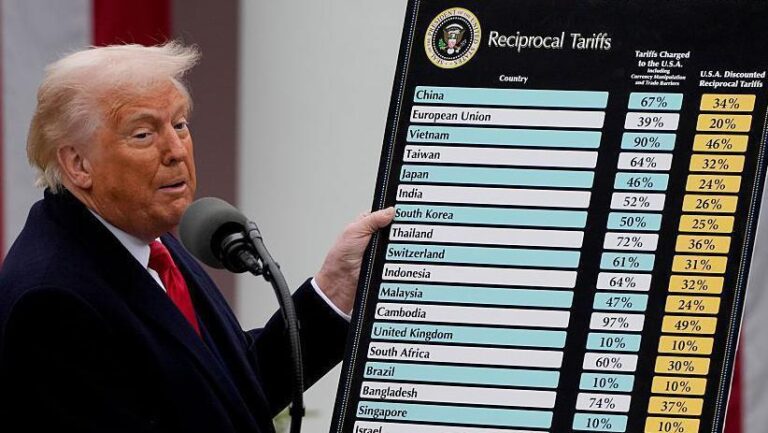Amid escalating trade tensions triggered by former President Donald Trump’s tariff policies, Canada is facing renewed pressure to confront its longstanding money laundering challenges. According to a recent report by The Hill, the economic fallout from U.S. tariffs has spotlighted vulnerabilities within Canada’s financial system, compelling government officials to take more decisive action against illicit financial activities. This development marks a significant shift in Canada’s approach to combating money laundering, as trade disputes intersect with national security and economic integrity concerns.
Trump’s Tariffs Expose Vulnerabilities in Canada’s Financial Oversight
As the ripple effects of Trump’s tariffs resonate across North America, Canadian authorities are under mounting pressure to tighten financial oversight mechanisms. The tariffs have not only disrupted trade but have inadvertently spotlighted systemic vulnerabilities within Canada’s anti-money laundering frameworks. Financial watchdogs now face the dual challenge of safeguarding economic stability while reinforcing efforts to detect and prevent illicit financial flows that exploit regulatory gaps.
Industry experts emphasize several critical areas requiring immediate attention:
- Enhanced inter-agency cooperation: Streamlining communication between financial regulators, law enforcement, and customs officials.
- Stricter enforcement of reporting standards: Mandating comprehensive disclosures from high-risk sectors, including real estate and luxury goods.
- Investment in advanced analytics: Leveraging AI and machine learning to identify suspicious transaction patterns effectively.
| Area of Vulnerability | Current Status | Recommended Action |
|---|---|---|
| Data Sharing | Limited coordination | Implement centralized data hub |
| Compliance Monitoring | Reactive audits | Shift to proactive surveillance |
| Technology Use | Outdated systems | Integrate AI-powered tools |
The Growing Impact of Illicit Money Flows on Canadian Economy and Trade
Canada’s economic resilience is increasingly undermined by the rising tide of illicit money flows that distort financial markets and erode public trust. The influx of dirty money, often linked to organized crime and foreign corruption, is complicating trade relations and inviting scrutiny from international partners, especially amid growing tensions spurred by tariffs imposed by the U.S. These covert capital movements are not only facilitating tax evasion but also inflating real estate bubbles and undermining legitimate business operations, demanding urgent regulatory tightening.
Key challenges facing Canadian authorities include:
- Tracing complex international money laundering networks
- Enhancing transparency in high-value asset transactions
- Coordinating cross-border enforcement with U.S. agencies
- Strengthening compliance among financial institutions
| Sector | Estimated Illicit Inflow (%) | Impact on Trade |
|---|---|---|
| Real Estate | 35% | Distorts property values, affecting investment stability |
| Financial Services | 28% | Weakens regulatory frameworks, raises risk premiums |
| Import/Export Businesses | 22% | Encourages under-invoicing, distorts trade balances |
Policy Experts Call for Strengthened Anti-Money Laundering Measures and Cross-Border Cooperation
As trade tensions rise following the implementation of Trump’s tariffs, Canadian policy experts emphasize the critical need for enhanced anti-money laundering (AML) laws coupled with stronger international collaboration. The tariffs have inadvertently spotlighted vulnerabilities in Canada’s financial system, where illicit funds can flow undetected across borders. Experts argue that without a rigorous overhaul of AML frameworks, these economic pressures might exacerbate the influx of money laundering activities, ultimately threatening the integrity of Canadian markets.
Central to the call for reform is the establishment of a unified regulatory approach that integrates intelligence sharing between nations. Experts highlight several key measures to combat this challenge effectively:
- Standardized reporting requirements across jurisdictions to close loopholes.
- Real-time data exchange platforms enabling swift cross-border cooperation.
- Increased funding for enforcement agencies tasked with tracking suspicious transactions.
| Measure | Expected Impact | Timeline |
|---|---|---|
| Unified AML Reporting | Reduce reporting gaps | 12 months |
| Cross-border Data Sharing | Faster detection | 18 months |
| Enhanced Enforcement Funding | Improved case resolution | Immediate |
Insights and Conclusions
As the economic ripple effects of Trump’s tariffs continue to be felt across North America, Canada finds itself at a pivotal crossroads. The heightened scrutiny on financial flows has pressured Canadian authorities to confront long-standing vulnerabilities in their anti-money laundering frameworks. While challenges remain, this intensified focus may ultimately strengthen Canada’s financial integrity and cross-border cooperation. Observers will be watching closely to see how Ottawa balances these reforms amid ongoing trade tensions and the evolving global economic landscape.




